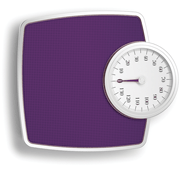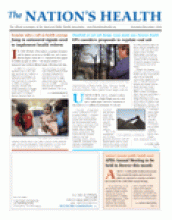It’s a good bet that someone in your circle of friends and family is affected by diabetes. More than 23 million Americans have the disease, and the incidence is going up along with the numbers on our bathroom scales.
In the old days, folks referred to diabetes as having “sugar,” or “sugar diabetes” — innocent-sounding names for a serious disease that is the seventh-leading cause of death in the United States.
Diabetes means you have too much glucose in your blood. Everyone has some glucose, or blood sugar, in their blood, but high blood glucose can damage many parts of your body, including your heart, blood vessels, kidneys and eyes. It can also lead to heart attacks and strokes.
Diabetes can be confusing because there are different kinds. You might know some-one who has type 1 diabetes, which accounts for 5 percent to 10 percent of all diagnosed adult cases. Type 1 occurs most often in children and young adults, and it’s not preventable. Researchers aren’t sure what causes it, but your genes and the environment can play a role. With type 1 diabetes, your body doesn’t make insulin, a type of hormone.
But by far the most common kind of diabetes is type 2. Making up as much as 95 percent of all diagnosed adult cases, type 2 diabetes is on the rise in the United States — even among children — and the increase is linked to skyrocketing rates of overweight and obesity. Type 2 diabetes begins when your body develops a resistance to insulin and no longer uses the hormone properly.
But here’s some good news: Type 2 diabetes is preventable. It’s tied to things like poor diet, a sedentary lifestyle and excess body fat — especially around your waist — as well as family history. High blood pressure and high cholesterol also put you at risk for type 2 diabetes, as does race and ethnicity. For example, if you’re black, Hispanic, American Indian, Asian American, Pacific Islander or Native Hawaiian, you’re at greater risk.

In the past, type 2 diabetes was a disease that affected mainly overweight adults older than 40. Today, more kids are being diagnosed with type 2 diabetes, probably because kids are getting heavier and are less active than they used to be. But no matter your age, it’s important to know your risk for diabetes.
“Once you have diabetes, it is an incurable disease,” says Ann Albright, PhD, RD, director of the Division of Diabetes Translation at the Centers for Disease Control and Prevention. “Whatever form it is, type 1 or type 2, we do not have a cure for either of those two forms of diabetes.”
Preventing type 2 diabetes
Whether you’ve never had type 2 diabetes or have been told by your doctor that you have “prediabetes” — a condition in which your blood glucose levels are higher than normal — the good news is there are steps you can take to prevent it or delay its onset.
Among the tips: Develop and maintain good lifestyle habits to keep your risk low. Get moving. Make physical activity part of your daily routine. And importantly, lose weight and eat healthy. If you’re at high risk, being physically active and shedding just 5 percent to 7 percent of your body weight can reduce your risk of developing type 2 diabetes by almost 60 percent.
“The later in life you get it, the less likely you are to develop complications,” according to Albright.
Photos courtesy iStockphoto. man, Zhang Bo; scale, Luca di Filippo
Reducing your risk of complications from type 2 diabetes starts with knowing you have the disease. Don’t be one of the nearly 6 million Americans who has diabetes and doesn’t know it.
Common symptoms of type 2 diabetes include frequent urination, extreme fatigue, weight loss, unusual thirst, extreme hunger, blurred vision, cuts that won’t heal, tingling or numbness in the hands or feet and recurring skin, gum or bladder infections. If you have any of these symptoms, talk to your health care provider right away.
If you have type 2 diabetes, you’re not alone. About 8 percent of people in the United States have diabetes, and the numbers are rising. If you find out you have type 2 diabetes, your goal is to prevent problems.
Make sure you have good medical care and ongoing support from friends and family. Keep your blood sugar and blood pressure managed. Taking care of your diabetes is a team effort that includes doctors, dietitians, pharmacists and nurse educators, but you’re the most important member of the team.
Diabetes during pregnancy
Baby on the way? That’s great, but keep in mind that another form of diabetes, called “gestational diabetes,” can occur while you are pregnant. Most of the time, it subsides after the baby arrives, but it’s a good idea to know your risk factors for this kind of diabetes. If you’re black, Hispanic or American Indian, you’re at greater risk for developing gestational diabetes. You’re also at greater risk if you’re overweight or obese, or if you have a family history of diabetes. If you develop gestational diabetes, you’ll be at greater risk for developing diabetes later, so make the necessary lifestyle changes to prevent or delay it.

Photos courtesy iStockphoto. Pregnant woman, Aldo Murillo
>> For more information on diabetes, visit www.cdc.gov/diabetes
- Copyright The Nation’s Health, American Public Health Association











